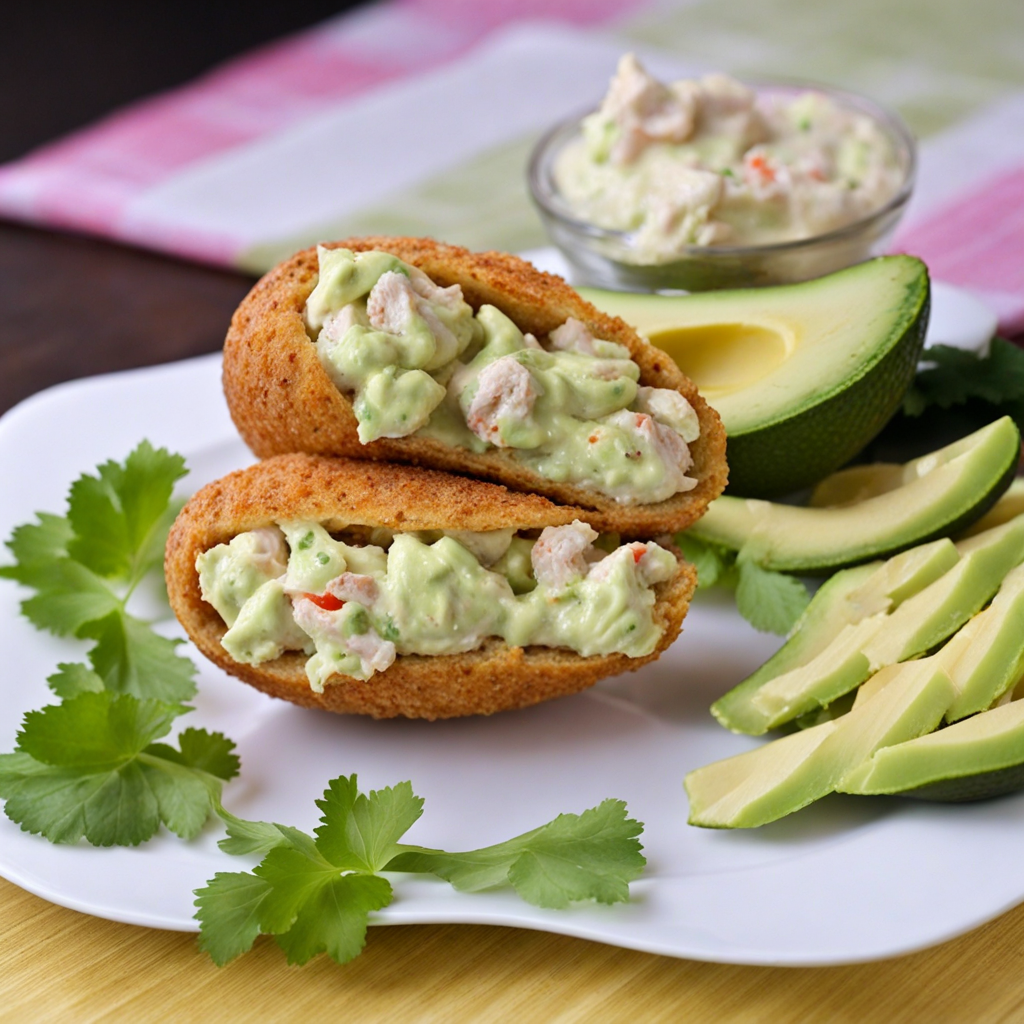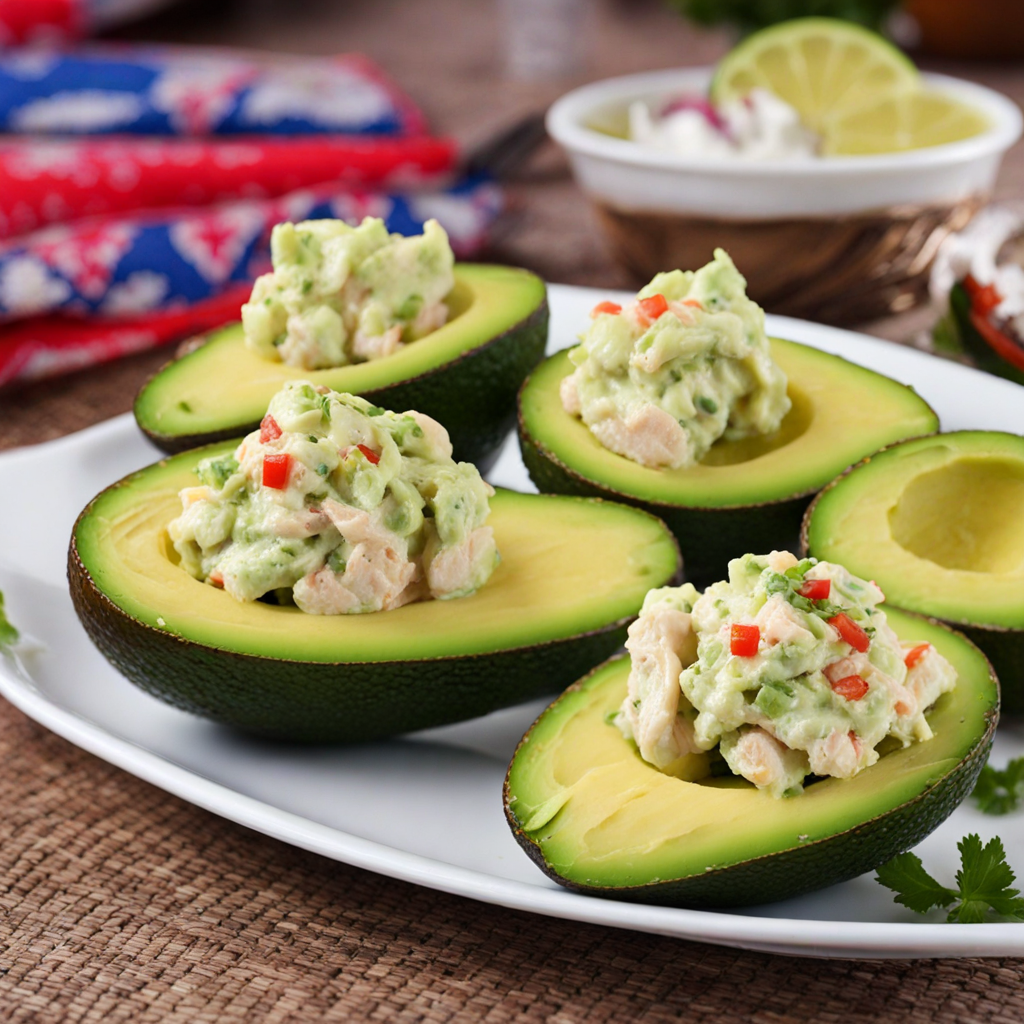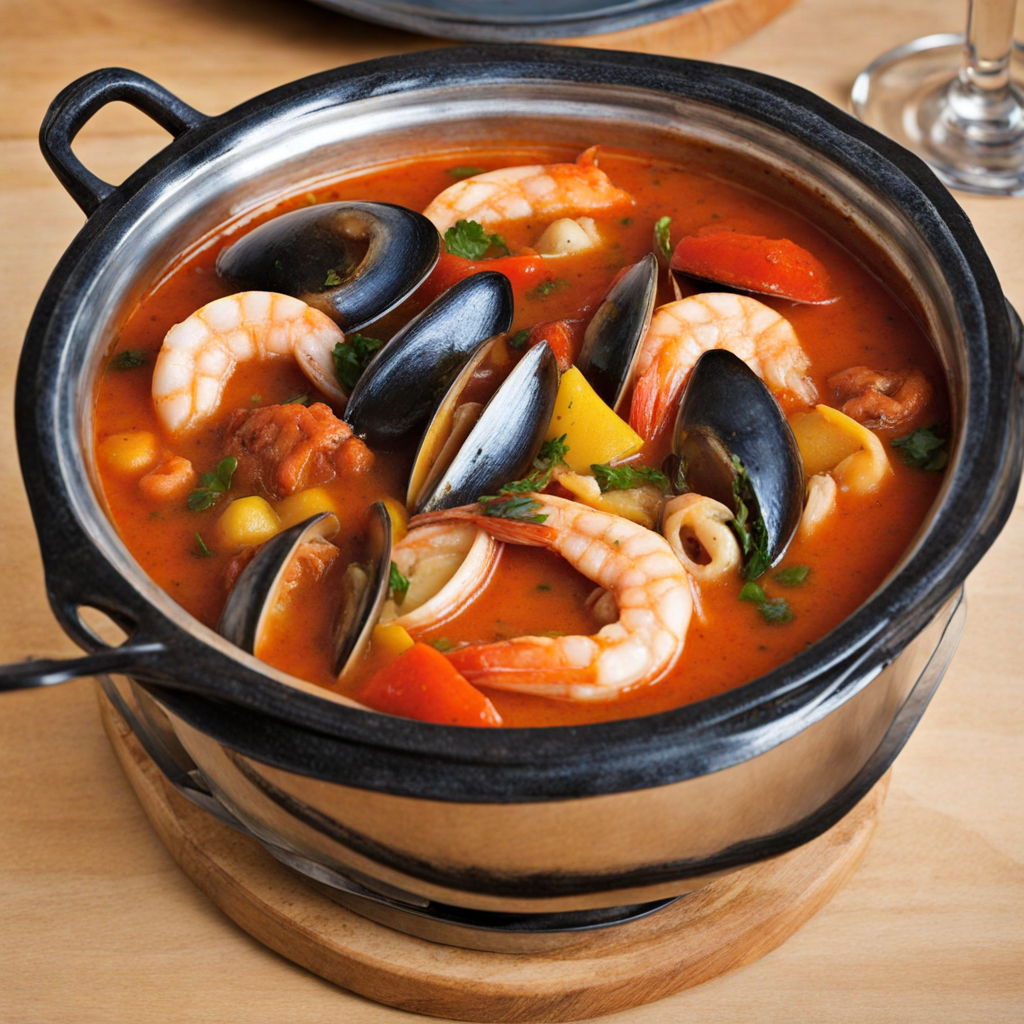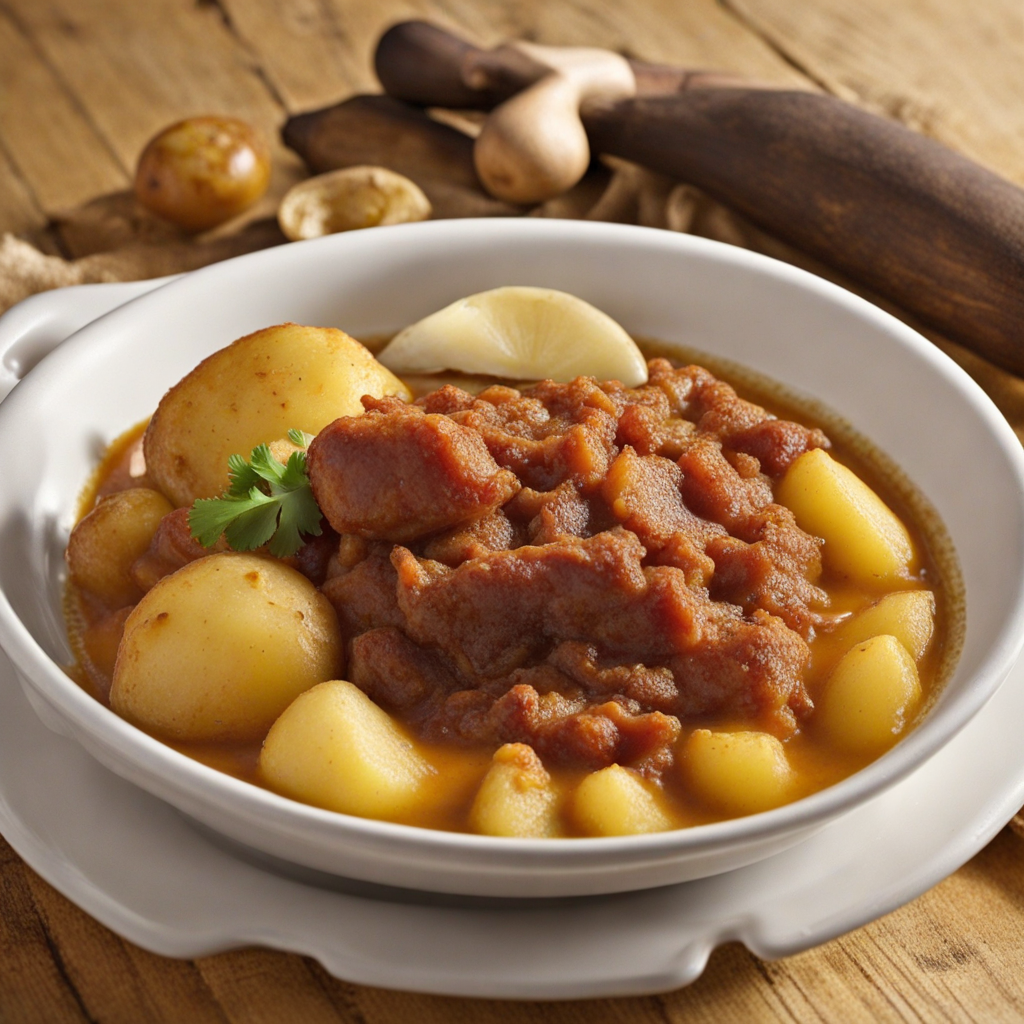Palta Reina
Palta Reina is a delightful Chilean dish that showcases the creamy richness of ripe avocados, known locally as "palta." At its core, this dish features halved avocados that are generously filled with a savory mixture, typically made from chicken or tuna salad, infused with ingredients like mayonnaise, olives, and hard-boiled eggs. The combination of flavors creates a deliciously satisfying experience, where the natural buttery texture of the avocado perfectly complements the savory filling. The dish is often garnished with fresh herbs or a sprinkle of paprika, adding a vibrant touch to its presentation. What makes Palta Reina particularly enticing is its versatility. While the classic version utilizes chicken or tuna, variations abound, allowing for creative adaptations with different proteins such as shrimp or even vegetarian options featuring chickpeas or quinoa. This adaptability not only caters to diverse palates but also makes it an excellent choice for both casual meals and festive gatherings. The dish can be served as a light lunch, a refreshing appetizer, or even as a show-stopping centerpiece at a party. In addition to being a feast for the senses, Palta Reina is a nutritious option packed with healthy fats from the avocado and protein from the filling. Its vibrant colors and rich flavors transport you to the sunny coasts of Chile, evoking the spirit of the country's culinary traditions. Whether enjoyed on a warm summer day or as a comforting meal, Palta Reina is a must-try for anyone looking to explore the delicious and unique tastes of Chilean cuisine.
How It Became This Dish
The History of Palta Reina: A Culinary Jewel of Chile Introduction Palta Reina, a beloved dish from Chile, is a vibrant representation of the country’s culinary identity. This delightful preparation, which consists of avocado (locally known as "palta") filled with a variety of ingredients, has a fascinating history that intertwines with the cultural evolution of Chilean society. As we explore the origins, cultural significance, and development of Palta Reina, we will uncover the rich tapestry of flavors and traditions that have shaped this iconic dish. Origins: The Birth of Palta in Chile The avocado, or palta, has its roots in Mesoamerica, where it has been cultivated for thousands of years. Archaeological evidence suggests that avocados were domesticated in regions that are now part of Mexico and Central America as early as 500 BC. The fruit was revered by the Aztecs and the Maya, not only for its creamy texture and nutritional benefits but also for its rich, buttery flavor. When the Spanish conquistadors arrived in the Americas in the 16th century, they encountered this exotic fruit and introduced it to Europe and other parts of the world. Avocados found their way to Chile in the 19th century, where they were embraced by the local populace. The country's temperate climate and varied geography provided ideal conditions for avocado cultivation, leading to its widespread popularity. The specific dish known as Palta Reina began to emerge in the mid-20th century, coinciding with the global fascination with avocados and the rise of health-conscious eating. The name "Reina," which means "queen" in Spanish, is thought to reflect the dish's status as a refined and elegant appetizer, often served at gatherings and special occasions. Cultural Significance Palta Reina quickly became a staple in Chilean cuisine, particularly as a popular starter in both homes and restaurants. Its simple yet elegant presentation and versatility made it a favorite among families and chefs alike. Typically, Palta Reina consists of halved avocados filled with a variety of ingredients, including tuna, chicken, or shrimp, often mixed with mayonnaise, herbs, and spices. This adaptability allows for regional variations and personal twists, making it a canvas for culinary creativity. The dish holds cultural significance beyond its deliciousness. It is often associated with social gatherings, celebrations, and family occasions. In Chile, food plays a central role in social interactions, and Palta Reina exemplifies this ethos. Its presence at barbecues, birthday parties, and holiday feasts underscores the importance of sharing and togetherness in Chilean culture. Moreover, the dish has also become emblematic of Chile's broader culinary identity, which blends indigenous ingredients with European influences. The combination of avocados, which are native to the Americas, with mayonnaise and other ingredients reflects the melding of cultures that characterizes Chilean cuisine. This dish serves as a reminder of the country's agricultural wealth and the ways in which food can bring people together. Development Over Time As Chileans embraced Palta Reina, the dish evolved, reflecting changing tastes and dietary trends. In the mid-20th century, as Chile experienced economic growth and increased urbanization, culinary influences from Europe and North America began to seep into everyday cooking. The incorporation of ingredients like mayonnaise and the introduction of canned goods made Palta Reina not just a dish of fresh produce but also a convenient and accessible option for busy families. In the 1980s and 1990s, as health food trends gained momentum globally, avocados began to be recognized for their health benefits, including healthy fats, vitamins, and fiber. This newfound appreciation for avocados contributed to the rise of Palta Reina as a health-conscious choice, appealing to a broader audience. The dish adapted to reflect contemporary dietary preferences, leading to variations that incorporated lighter dressings, added vegetables, or alternative proteins. The 21st century has seen a resurgence of interest in traditional and local cuisines, with a renewed focus on sustainable eating practices. As Chileans sought to reconnect with their culinary heritage, Palta Reina found itself back in the spotlight. Chefs began to experiment with the dish, incorporating local ingredients and presenting it with a modern twist. For instance, some chefs have introduced quinoa, a grain native to the Andes, as a filling, while others have enhanced the dish with exotic spices or salsas. Contemporary Significance Today, Palta Reina is a common sight on menus across Chile, from casual eateries to upscale restaurants. Its enduring popularity speaks to its adaptability and the way it encapsulates the essence of Chilean hospitality. The dish is often served as a starter during traditional asados (barbecues) or family gatherings, where it serves not only to whet the appetite but also to foster conversation and connection. In addition to its culinary appeal, Palta Reina has also found a place in popular culture. Social media platforms have become a stage for showcasing this dish, with food bloggers and influencers sharing their own interpretations and creative presentations. The vibrant green of the avocado, combined with colorful fillings, makes for an Instagram-worthy dish that appeals to a visually-oriented audience. Furthermore, as the global avocado trend continues to grow, Palta Reina has gained recognition beyond Chile's borders. Chilean restaurants around the world have introduced this dish to international diners, allowing for a cross-cultural exchange of flavors and ideas. This exposure has helped elevate Chilean cuisine on the global stage, making Palta Reina a symbol of national pride. Conclusion The history of Palta Reina is a testament to the rich culinary heritage of Chile. From its origins as an indigenous fruit to its rise as a beloved dish in Chilean households, Palta Reina embodies the essence of Chilean culture—community, celebration, and the joy of sharing good food. As it continues to evolve and adapt to contemporary tastes, this dish remains a cherished part of Chile's gastronomic identity, inviting both locals and visitors to savor its delicious flavors and the stories behind them. Whether enjoyed at a family gathering or presented as a gourmet creation in a trendy restaurant, Palta Reina will forever hold a special place in the hearts (and stomachs) of those who encounter it.
You may like
Discover local flavors from Chile







